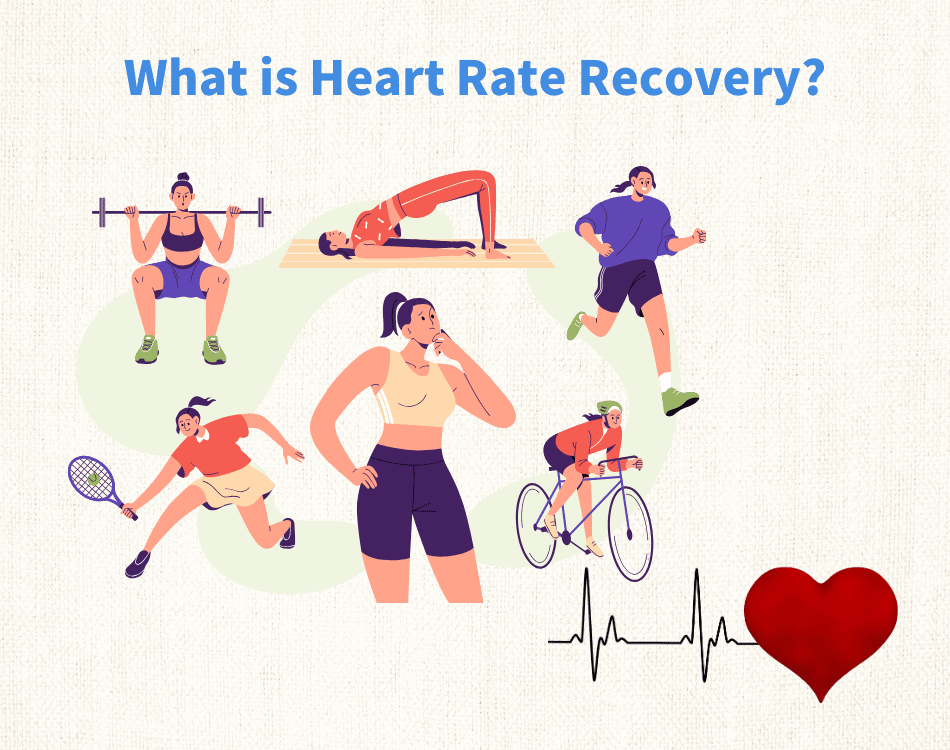Unlocking the Secrets of a 30 BPM Heart Rate Recovery: What It Means for Your Fitness Journey!
Heart rate recovery is a crucial metric in assessing cardiovascular fitness and overall health. It measures how quickly your heart rate returns to normal after exercise, serving as an indicator of your heart’s efficiency and your body’s recovery capabilities. A heart rate recovery of 30 beats per minute (BPM) is particularly noteworthy—it suggests that your cardiovascular system is in good shape and that you have a solid fitness level. In this article, we will delve deeper into what this recovery rate signifies, how it reflects your fitness journey, and explore practical steps to achieve and maintain such impressive heart rate recovery rates.

Understanding Heart Rate Recovery
Heart rate recovery refers to the speed at which your heart rate returns to baseline following physical activity. It is typically measured by taking your heart rate immediately after exercise and then again after a set period—often one minute. The difference between these two measurements indicates your recovery rate. Physiologically, this process involves the parasympathetic nervous system kicking in to slow your heart rate down after the sympathetic nervous system has ramped it up during exercise. A faster recovery rate is generally associated with better cardiovascular fitness, as it indicates that your heart can efficiently manage and redistribute blood flow post-exercise, enhancing oxygen delivery and nutrient distribution throughout your body.
What Does a 30 BPM Heart Rate Recovery Mean?
A heart rate recovery of 30 BPM is considered an excellent benchmark for cardiovascular health. This rate indicates that your heart rate decreases by 30 beats per minute or more within a minute after stopping exercise. Generally, a recovery rate of 12-20 BPM is average, while rates above this signify better fitness levels. A 30 BPM recovery rate often correlates with regular aerobic exercise, a healthy lifestyle, and strong heart muscle efficiency. It can also suggest that your body is effectively managing stress and inflammation, contributing to overall health and well-being. Friends of mine who have engaged in consistent cardio workouts often share their excitement when they achieve this milestone, as it not only reflects their hard work but also motivates them to push further in their fitness journey.
Factors Influencing Heart Rate Recovery
Several factors can influence heart rate recovery, including age, fitness levels, and training intensity. Younger individuals typically experience faster recovery rates due to more adaptable cardiovascular systems. Conversely, as we age, our heart’s ability to recover can slow down, making it crucial for older adults to engage in regular physical activity. Fitness levels also play a significant role; those who exercise consistently and include aerobic training in their routines usually have quicker recovery times. Intensity of training is another important aspect—higher intensity workouts can initially lead to slower recovery rates, but with consistent training, your body adapts and improves. Additionally, genetics and lifestyle choices, such as diet, alcohol consumption, and smoking, can significantly impact heart rate recovery, highlighting the need for a holistic approach to fitness and health.
How to Improve Heart Rate Recovery
Improving heart rate recovery involves a combination of exercise, nutrition, and recovery practices. Engaging in regular aerobic exercises, such as running, cycling, or swimming, can enhance cardiovascular fitness, leading to better recovery rates. High-intensity interval training (HIIT) is especially effective as it trains your heart to recover more quickly. Nutrition also plays a vital role; consuming a balanced diet rich in fruits, vegetables, whole grains, and lean proteins can support overall heart health. Moreover, staying hydrated and managing stress through practices like yoga or meditation can further enhance recovery. Incorporating adequate rest and recovery time between workouts is essential, as this allows your heart and body to adapt and strengthen over time. I recall a friend who struggled with recovery rates until he made these dietary and lifestyle changes. His journey towards better health not only improved his heart rate recovery but also made him feel more energetic.
Monitoring Your Heart Rate Recovery
Effectively monitoring your heart rate recovery can provide insight into your cardiovascular fitness and overall health progress. There are various tools and techniques available, including wearable fitness trackers, smartwatches, and heart rate monitors, which can accurately record your heart rate during and after exercise. It’s essential to establish a consistent routine for monitoring—measure your heart rate immediately after exercise and again after one minute to calculate your recovery rate. Keeping a fitness journal can also be beneficial; tracking your recovery rates over time can help you identify patterns, celebrate improvements, and adjust your training plan as needed. By being consistent and attentive to these metrics, you can stay motivated and focused on your fitness goals.
Key Takeaways on Heart Rate Recovery
In summary, a 30 BPM heart rate recovery serves as an excellent indicator of cardiovascular fitness and overall health. Understanding the significance of heart rate recovery can empower individuals to take actionable steps towards improving their fitness journey. By incorporating regular aerobic exercise, maintaining a balanced diet, and effectively monitoring recovery rates, anyone can work towards achieving this impressive benchmark. Remember, every small step counts towards a healthier lifestyle—embrace the journey and celebrate your progress!







